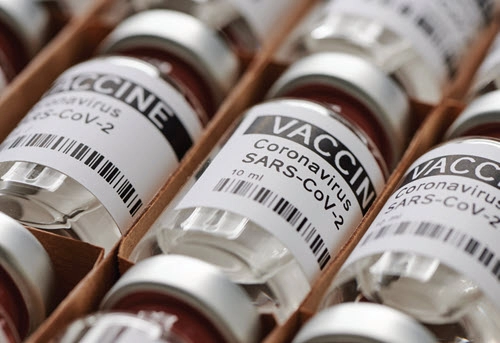Are you prepared to offer financial incentives?
Hospice’ challenges come on multiple fronts for COVID-19 vaccination, including securing access for workers who want the vaccine and encouraging those who are reluctant to get jabbed. The Visiting Nurse Service of New York’s experience as a provider of vaccinations may offer instruction for agencies tackling both scenarios.
Background: VNSNY, which says it’s the largest not-for-profit home- and community-based health care organization in the U.S., began furnishing vaccinations to staff at its midtown Manhattan office in early January, recounts VNSNY exec Andria Castellanos. That came after a complicated process of working with federal, state, and New York City officials and systems to become a vaccine center, Castellanos tells AAPC.
With around 13,000 employees total, organizing and administering inoculations was — and continues to be — an enormous task requiring “tremendous logistics,” Castellanos acknowledges.
Important difference: Instead of creating a system where staff register themselves for vaccination appointments, VNSNY set up a scheduling team for each of its business lines — state-licensed home health, Medicare-certified home health, hospice, community mental health, and care management, Castellanos relates. The scheduling teams then reached out to all employees in their division who were eligible for vaccination.
The scheduling teams has had to roll with the punches to keep up with ever-evolving state guidance on whom VNSNY is permitted to vaccinate, starting with direct care workers, Castellanos says.
One perk of using a scheduling team is that they can set staffers’ appointments around their job hours, making sure they don’t conflict, Castellanos offers.
VNSNY had administered about 10,500 doses by mid-March and “we’re still going,” Castellanos reported at the time. That figure includes first and second doses. To make sure all doses get used, the agency sometimes offers vaccinations to workers from separate, similar organizations on a limited basis, she adds.

Vaccine hesitancy is widespread, and the hospice worker population is no exception. A recent Pew Research poll says 30 percent of Americans say they “probably” or “definitely” plan to not get vaccinated. Many home care agencies have reported having vaccination rates in the low double-digits.
Aides are often cited as the group least likely to want vaccination. But Castellanos reports that all types of employees of child-bearing age — women and men — who are contemplating planning families have also expressed significant hesitation in receiving the vaccine. “We’re hopeful the science comes out on that soon,” she tells AAPC.
VNSNY is “really proud” that it had achieved a 50-to-60 percent rate for its staff overall in mid-March. “It’s a work in progress,” Castellanos acknowledges, but it’s a good start.
Caveat: It’s a challenge to get accurate information about staffers who have been vaccinated at other locations, so the agency’s rate is an estimate, Castellanos points out.
Heed These Tips Learned Through Real World Experience
Castellanos points to these factors that have helped the agency’s vaccination program thrive:
1. Avoiding tech confusion. Multiple things about forming a vaccination appointment scheduling team help encourage employees to get jabbed. For one, many aides “have challenges with technology,” so they would not be able to effectively utilize a web-based sign up system, Castellanos tells AAPC.
2. Eliminating language obstacles. Many aides also don’t speak English as a primary language, Castellanos shares. VNSNY made sure its vaccination appointment schedulers speak the primary languages of its aides — Spanish, Mandarin, Russian — and then matches schedulers with aides who speak those languages to facilitate communication.
3. Rewarding financially. Aides must often take time out of their work schedules or pay for child care to travel to the VNSNY location to receive their vaccinations. VNSNY is providing workers who have received both vaccinations with a $100 bonus to help recognize that, Castellanos says.
4. Assisting with access. VNSNY has a large service area — the five boroughs of New York City, as well as Nassau, Suffolk, and Westchester Counties. For some workers, the trip into Manhattan is a burden and they would rather get vaccinated closer to home or work. VNSNY helps those staff find vaccination sites and appointments, Castellanos shares.
5. Providing education. Since it began vaccinating, VNSNY has offered a weekly call where employees can ask questions of the agency’s medical officer physicians. VNSNY then transcribes those calls and makes the transcripts available on an internal work website, Castellanos says.
6. Passage of time. Perhaps as important as any of the agency’s efforts, the sheer passage of time has helped convince some employees who earlier opted out to now opt in. While employer-provided information and support is helpful, workers “really want to hear from their friends and members in their community,” Castellanos stresses. The more people they know who get vaccinated, the more they are willing to consider vaccination themselves. “A person who said ‘no’ two months ago may now say ‘yes,’” she says.
